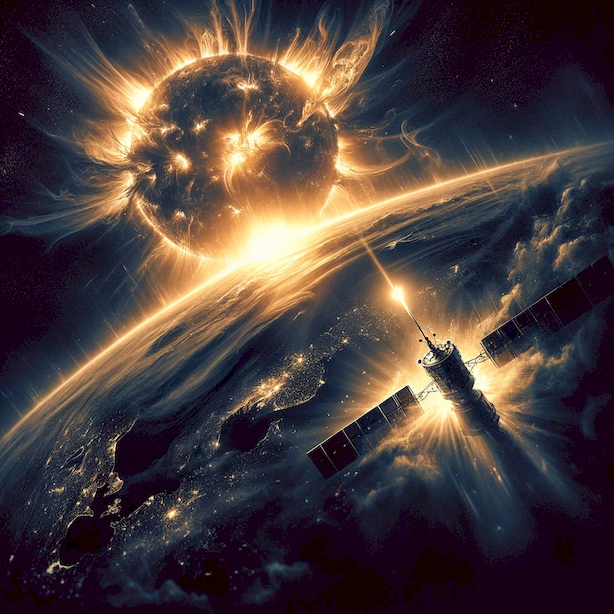Carrington Event
In light of the potential risks posed by Carrington Events – massive solar storms capable of crippling the technology of the human world – it's crucial to cultivate skills in memory, problem-solving, and creativity.

When disaster strikes, you will have to help your family and friends survive, and then do your part to rebuild civilization and artificial generalized intelligence (our best tools).
Carrington Events are a normal and natural phenomenon, but their periodicity extends beyond the typical lifespan of a human. The most powerful one on record so far occurred in 1859. Here is a break down of what happened at that time:
- Solar Flare Observations:
- On September 1st, 1859, Richard Carrington observed a large solar flare and a sudden eruption of intense high-energy radiation from the sun's surface.
- Coronal Mass Ejection (CME):
- Accompanying the flare was a coronal mass ejection, a huge burst of solar wind and magnetic fields rising about the solar corona, blasting outward into space.
- This CME reached Earth within 18 hours, a remarkably fast transit (normally, it takes several days).
- Effects on Earth:
- When the CME hit Earth's magnetosphere, it induced one of the largest geomagnetic storms on record.
- Telegraph systems across Europe and North America failed, with some telegraph operators reporting electric shocks. Telegraph pylons threw sparks, and telegraph paper spontaneously caught fire.
- The interaction of solar wind with Earth's magnetic field produced extraordinary auroras (northern and southern lights) that were visible as far south as the Caribbean.
- The geomagnetic disturbances were so strong that auroras were visible near the equator and were bright enough to read by at night.
Imagine what a Carrington event would do today.
We narrowly avoided disaster on July 23rd 2012 when a CME of the equivalent violence of the 1859 pulse, just barely missed the earth. Our phones, computers, electrical distribution centres, the Internet, telecommunications, and databases could have all been destroyed. With each passing year, and each technological advancement we become more vulnerable to this kind of space weather: We are going to regret removing the books from our libraries.
Such an event won't harm you directly; we have evolved with the sun and like other living things on our planet; we can endure a Carrington event without much notice. But our advanced technology has evolved over the short term, it has yet to adapt itself to the sun's cruel lessons.
It would be a trivial matter for humans to build protections into our technology, but the short-term focus of our economic systems prioritize immediate profits over the long-term survival of modern society. It is well understood that a Carrington event will break our supply chains and global trade systems, and it will be hard to re-build the computers we need to make things work again.
There is no surprise here, Carrington events are well understood, they are just not talked about. Other disaster narratives are more popular and benefit our elites.
Learn how to think and remember, using our amazingly advanced tools while you still have them. They will be taken away: there is a 0.7 percent chance of a Carrington event every year. Build up your mnemonic structures while you still have access to the near infinite creative resources of AI, before AI is put to bed by the sun.